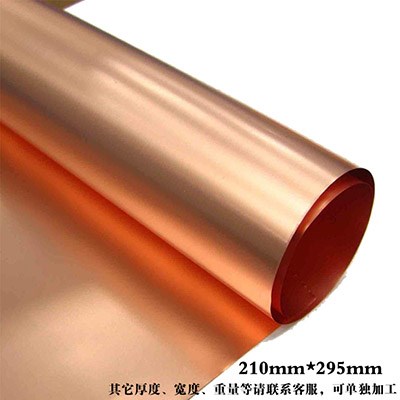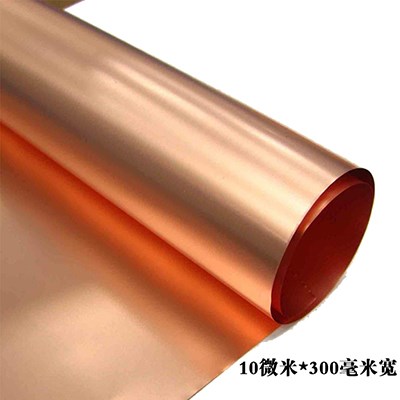Electrolytic copper foil And Calendered copper foil Similarities and differences of! What are the similarities between rolled copper foil and electrolytic copper foil? What are the differences between rolled copper foil and electrolytic copper foil? What are the advantages and disadvantages of calendered copper foil and electrolytic copper foil? What are calendered copper foil and electrolytic copper foil? Both rolled copper foil and electrolytic copper foil belong to copper foil. Calendered copper foil and electrolytic copper foil are separated according to the manufacturing method of copper foil.
Copper foil can also be divided into many categories according to other methods. For example, copper foil can also be divided according to the scope of application: copper foil laminate (CCL), copper foil for printed circuit board (PCB), copper foil for lithium ion secondary battery and copper foil for electromagnetic shielding. In addition, copper foil can also be divided into single-sided copper foil and double-sided (reverse) copper foil according to the surface treatment method. Copper foil can
According to the performance, it can be divided into standard copper, high elongation copper foil (HD), high temperature high elongation copper foil (THE copper foil) and transfer resistant copper foil. There are other ways to divide copper foil, so we won't introduce more. Let's introduce the knowledge about calendered copper foil and electrolytic copper foil.

The similarities and differences between electrolytic copper foil and calendered copper foil! Features of calendered copper foil and electrolytic copper foil:
Features of electrolytic copper foil:
(1) Electrolytic copper foil has better conductivity
(2) Electrolytic copper foil is loose and easy to break
(3) Electrolytic copper foil is finished by electroplating process.
2. Features of calendered copper foil:
(1) The rolled copper foil has good winding performance,
(2) The unit price of calendered copper foil is more expensive than electrolytic copper foil. The calendered copper foil has compact molecules, good flexibility, and the thinner the better flexibility. Generally, products with bending requirements use calendered copper foil.
(3) Calendered copper foil is produced by coating.

The similarities and differences between electrolytic copper foil and calendered copper foil! Thickness control of calendered copper foil and electrolytic copper foil: usually, the factory has very strict requirements on the thickness of copper drop, generally between 0 3mil and 3mi, and there is a special copper foil thickness tester to check its quality. The control of copper foil thickness is mainly based on two reasons:
1. A uniform copper foil can have a very uniform resistance temperature coefficient and a low dielectric constant, which can reduce the signal transmission loss. This is different from the requirement of capacitance, which requires a high dielectric constant, so that it can accommodate a higher capacity in a limited volume. Why is the resistance smaller than the capacitance? In the final analysis, the dielectric constant is high!
2. The temperature rise of thin copper foil is small under the condition of high current, which is very beneficial to heat dissipation and component life. It is also true that the width of copper wire in digital integrated circuit is less than 0.3cm. The well made FPC finished board is very uniform and has a soft gloss (because the surface is brushed with solder resist), which can be seen by the naked eye, but it should be seen from the copper substrate
Not much, unless you are an experienced quality inspector in the factory.





